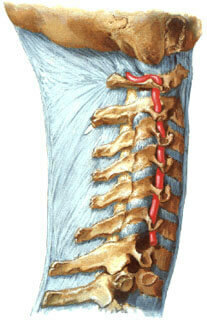Brain hemorrhage: signs, causes and treatment, prognosis
Content
- Status description
- Causes and risk factors
- Symptoms and Signs
- Diagnostics
- Treatment
- Prophylaxis
- Forecast
- Complications and causes of death
Status description
Cerebral hemorrhage (also called intracerebral hemorrhage, hemorrhagic stroke) Is bleeding inside the brain. In most cases, hemorrhages develop in the basal ganglia, cerebral lobes, cerebellum, or pons. Hemorrhages can also occur in other areas of the brainstem or midbrain.
Cerebral hemorrhage accounts for approximately 10% of all types of strokes, but it has a much higher mortality rate. In patients over 60 years of age, cerebral hemorrhage is more common than subarachnoid hemorrhage (bleeding around the brain, not in it).
Causes and risk factors
The most common causes of cerebral hemorrhage are:
- a chronic increase in blood pressure (arterial hypertension) that weakens small arteries, causing them to burst.
Risk factorsthat contribute to the occurrence of hemorrhage include:
- smoking cigarettes;
- obesity;
- Consuming unhealthy foods (high in saturated fat, trans fat, and calories).
The use of cocaine or amphetamines can cause a temporary but severe increase in blood pressure and hemorrhage. In some older people, an abnormal protein called amyloid builds up in the arteries of the brain. This congestion (called amyloid angiopathy) weakens the arteries and can cause hemorrhage.
Less common causes of cerebral hemorrhage include congenital abnormalities of the blood vessels, bulging of the walls of the arteries in the brain (cerebral aneurysm), abnormal connections between arteries and veins (arteriovenous malformation) inside the skull, trauma, tumors, inflammation of the blood vessels (vasculitis), disorders of the hemostatic system, as well as the use of anticoagulants in too high doses.
Blood clotting disorders and the use of anticoagulants increase the risk of death from cerebral haemorrhage.
Read also:Dyscirculatory encephalopathy of 1, 2 and 3 degrees, what is it, symptoms and methods of treatment
Symptoms and Signs

Cerebral hemorrhage begins suddenly. Severe headache is common. For many people, a cerebral hemorrhage causes a change in consciousness, often occurring within seconds or minutes. Patients may find it difficult to navigate in their environment, their ability to understand, remember and think clearly. Nausea, vomiting, and seizures are common.
If the hemorrhage is minor, consciousness may not be impaired, and headache and nausea may be minor or absent.
As the focus of cerebral hemorrhage expands, symptoms that indicate brain dysfunction develop suddenly and continuously worsen.
Some symptoms, such as weakness, paralysis, loss of sensation, and numbness, often affect only one side of the body. The ability to speak may be lost or disorientation appears. Vision may be impaired or lost. One or both eyes cannot move in certain directions. Therefore, the eyes can look in different directions.
Diagnostics
Doctors usually suspect a brain hemorrhage based on symptoms and the results of a medical examination.
Blood sugar is measured immediately, as low blood sugar can cause symptoms similar to stroke symptoms.
Blood tests are also done to determine the number of platelets (which contribute to blood clotting) and blood clotting time. The platelet count (platelet count) can be low for many reasons. A low platelet count increases the risk of bleeding. Blood clotting can be impaired if you take too high a dose of warfarin, liver failure, or other medical conditions.
Computed tomography (CT) or magnetic resonance imaging (MRI) is done immediately to confirm the diagnosis. Both tests help doctors distinguish a cerebral hemorrhage from an ischemic stroke. These examinations also reveal whether a lot of brain tissue has been damaged and whether pressure in other areas of the brain is increased.
Read also:Vertebral artery syndrome
Sometimes doctors do CT angiography (CT is done after a contrast agent is injected into a vein) to evaluate the progression of the bleeding. If it progresses, the prognosis is poor.
Treatment

Patients with cerebral hemorrhage are usually admitted to the intensive care unit (ICU). Here they can be monitored, if necessary, vital functions can be maintained (for example, breathing) and any problems that arise can be treated.
Treatment of cerebral hemorrhage is different from treatment ischemic stroke. Anticoagulants (such as heparin and warfarin), thrombolytics and antiplatelet agents (such as aspirin), as they aggravate bleeding.
If a brain hemorrhage occurs in patients taking an anticoagulant, treatment to promote blood clotting is necessary, for example:
- vitamin K, usually by intravenous administration;
- platelet transfusion;
- blood transfusion with removed blood cells and platelets (fresh frozen plasma);
- a solution containing blood coagulation factors and other proteins that contribute to blood coagulation (concentrate of prothrombin complex factors).
High blood pressure is only treated if it is very high. Reducing blood pressure too quickly or too much can reduce the supply of blood to parts of the brain that have already been deprived of blood supply due to hemorrhage. A lack of blood can cause a stroke (ischemic stroke) in these parts of the brain.
Surgery to remove accumulated blood and lower intracranial pressure is rarely done because the surgery itself can damage the brain. In addition, removing accumulated blood can initiate further bleeding, further damaging the brain and leading to severe disability. However, such an operation can be life-saving for extensive hemorrhage in the cerebellum (the part of the brain that is involved in coordinating body movements).
When seizures occur, anticonvulsants are prescribed.
Prophylaxis
In order to prevent cerebral hemorrhage, cessation of smoking, alcohol and cocaine abuse is recommended.
Read also:Asthenic syndrome: symptoms, causes, diagnosis, treatment
The most important task in the prevention of re-hemorrhage in the brain is the control of blood pressure.
Forecast
Cerebral hemorrhage is more fatal than ischemic stroke. Hemorrhage is often extensive and catastrophic, especially in patients with chronic high blood pressure. About half of patients with extensive hemorrhage die within a few weeks. Surviving patients usually regain consciousness and some degree of brain function over time. However, in most of them, the lost brain function is not fully restored.
If the hemorrhage is small, patients recover better than patients with ischemic stroke. Bleeding has a less pronounced destructive effect on the brain tissue than a lack of oxygen, which is noted in ischemic strokes.
Complications and causes of death
- Breakthrough of blood into the ventricles of the brain.
- Secondary hemorrhage in the brain stem.
- Temporo-tentorial insertion and insertion of the cerebellar tonsils into the foramen magnum (dislocation syndrome).
- Systemic disorders of hemodynamics and respiration.
- Occlusive hydrocephalus.
- Increased intracranial pressure.
- Epileptic syndrome
- Hydrocephalus,
- Increased intracranial pressure
- Central post-stroke pain syndrome in paralyzed limbs.
Somatic complications:
- Urinary tract infections, urinary incontinence.
- Pneumonia, aspiration, hypoventilation of the lungs, atelectasis.
- Pulmonary embolism.
- Decompensation heart failure, heart rhythm disturbances, myocardial infarction, orthostatic hypotension.
- Gastrointestinal bleeding, stress ulcers.
- Deep vein thrombosis of the lower leg.
- Dehydration.
- Pulmonary edema.
- Sepsis.
- Pressure ulcers, muscle wasting, contractures in the limbs.
- Falls of patients with limb fractures.



